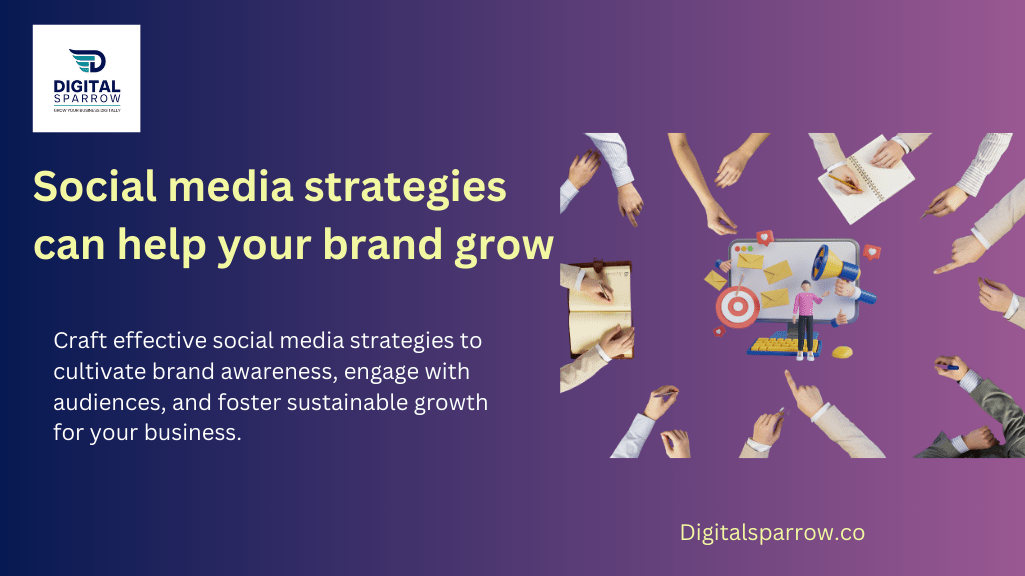Social media refers to the use of web and mobile-based technologies to create, share, and exchange information, ideas, and content in virtual communities and networks. Social media platforms allow users to create and share text, images, videos, and other types of content with their friends, family, and followers.
Examples of some popular social media platforms can be Facebook, Instagram, Twitter, LinkedIn, TikTok and YouTube. Each of these platforms has unique features and characteristics that allow users to connect with others and share information in a variety of ways.

It has transformed the way people communicate and interact with each other, as well as the way brands promote their products and services. It has created new opportunities to build a relationship with their customers and engage with their targeted audience. A brand can easily interact with its customers while taking feedback from them and making its products and services better.
Mastering the Art of Online Promotion-https://digitalsparrow.co/mastering-the-art-of-online-promotion/
Some Important Social Media Strategies
Social networking becomes a crucial marketing tool for companies of all sizes in the modern digital age. Social media presents a fantastic opportunity to engage with your target audience and advance your business thanks to its billions of active users across a variety of channels. But in order to benefit from social media, you must develop a solid social media plan. We’ll talk about several social media methods in this article that can boost your brand.
- Define your objectives.
Before you start creating a social media strategy, you need to define your objectives. What do you want to achieve with social media? Your goals will shape your social media strategy and help you measure your success. Your objectives could be to
- Increase brand awareness
- Drive traffic to your website
- Generate leads and sales.
- Improve customer engagement and loyalty
- Build relationships with influencers.
By defining your objectives, you can focus your efforts on what’s important and create a plan accordingly.
- Identify your target audience.
Once your objectives have been established, the following stage is to decide who your target audience is. With your social media strategy, whom are you hoping to connect with? What are their characteristics, hobbies, and internet activities? To create content that resonates with your target audience and effectively promotes your business, you must first understand who they are.
- Utilise a variety of tools and techniques to determine who your target market is, such as:
- Social media analytics: To find out who is engaging with your material, use the information offered by social media sites.
- Surveys and interviews: To better understand the preferences and habits of your current consumers, do surveys and interviews with them.
- Market research: To find trends and patterns in the behaviour of your target audience, use data from market research.
Knowing your intended audience will help you develop content that appeals to their needs and interests and establish a deeper connection.
- Choose Your Social Media Platforms
Not all social media platforms are created equal. So, this is the reason that you need to choose the ones that can prove to be the most relevant for your business and target audience. The most popular social media platforms include Facebook, Instagram, Twitter, LinkedIn, and TikTok. Here’s a brief overview of each platform and its benefits:
- Facebook: A general social media platform with a large user base that’s ideal for building brand awareness and engaging with your audience.
- Instagram: A highly visual platform that’s perfect for businesses with a strong visual identity, such as fashion, beauty, and food.
- Twitter: A platform that’s ideal for businesses that want to share news and updates quickly and engage with their audience in real time.
- LinkedIn: A professional networking platform that’s perfect for B2B businesses and individuals who want to build their professional brand and network.
- TikTok: A fast-growing platform that’s ideal for businesses that want to reach a younger audience with short-form video content.
By choosing the right social media platforms, you can maximize your reach and engagement with your target audience.
- Develop Your Content Strategy
The next stage is to create your content plan once your goals, target market, and social media channels have been determined. The type of material you’ll produce, the frequency of your postings, and the tenor and manner of your messaging should all be highlighted in your content strategy. You can create the following content types, for example:
- Blog posts
- Videos
- Infographics
- Images and graphics
- Live streams
- Stories
You must consider the tastes and interests of your target audience while creating your content strategy. Also, watch out for any compromises to your company’s distinctive value offer. Your content should benefit your consumers and complement the messaging and personality of your company.
- Implement Your Social Media Plan
Once you’ve developed your social media strategy it’s time to implement your plan. Here are some tips to help you execute your social media strategy effectively:
- Set up your social media profiles: Create a profile on each of the social media platforms you’ve chosen. Use consistent branding, such as your logo and colour scheme, to create a cohesive brand identity across all platforms.
- Interact with your audience; as social media is a two-way dialogue, be sure to reply to messages, comments, and mentions very away. This will encourage your audience to trust you and stick with you.
- Track your performance: Use social media analytics tools to keep tabs on your activity and determine what’s effective and what isn’t. Utilise this information to improve your social media strategy and, when necessary, change your techniques.
- Work with influencers: To promote your business, team up with influencers whose fan base matches that of your target market. This may broaden your appeal to and establish your authority with your audience.

Social media marketing for startup-https://startupadvice.in/social-media-marketing-for-startups-a-30-days-plan/
By implementing your social media plan effectively, you can build a strong online presence and achieve your marketing objectives.
- Measure Your Results
The final step in developing an effective social media strategy is to measure your results. Businesses can use social media analytics tools in order to track their performance and see how their content is performing. Some of the metrics you can track include:
- Reach: The number of people who have seen your content
- Engagement: The number of likes, comments, and shares your content has received
- Click-through rate: The percentage of people who have clicked on a link in your content
- Conversion rate: The percentage of people who have taken a desired action, such as signing up for your newsletter or making a purchase
Businesses need to have an effective social media strategy since they all want to interact with their target market and advance their brands. By defining the enterprise’s goals, identifying the target market, choosing the best social media platforms, developing a content strategy, implementing the strategy, and assessing the overall results, management can create an effective social media strategy that produces results for the company.


Your article helped me a lot, is there any more related content? Thanks!